How to deal with aphids on currants: the experience of professionals
The most famous among garden pests is aphid: it parasitizes on currants, raspberries, grapes, apple and other fruit and berry crops. In hot and dry weather, insects reproduce rapidly. They will not be able to destroy an adult bush or tree, but it is necessary to fight them, otherwise the hopes for a good harvest will not come true.
How to recognize an enemy?
The aphid family is very extensive. The number of its representatives reaches 4 thousand. On the currant bushes with red and white berries, leafy gall aphid... As a result of the vital activity of the pest, the leaves of the plant are covered with swellings and growths of yellowish and cherry color. They can appear on its branches. Black currant attracts more gooseberry shoot aphids. Feeding on cell sap, tiny insects cause curling and wilting of leaves, deformation of buds. Young shoots of currant bushes inhabited by pests are bent, and their growth slows down.
But leaf and other types of aphids are dangerous not only for this. A large insect colony weakens the plant, making it vulnerable to viruses and bacteria. The natural result of their appearance in the garden is dangerous diseases. Unable to process all the juice they suck, the pests emit a sweet substance (honeydew, or honeydew). The sticky film on the plant prevents it from breathing, moreover, various kinds of fungi quickly settle in it and actively develop. It is because of aphids that white and red currants begin to suffer from black sooty dew.
Contrary to popular misconception, ants do not fight pests, but contribute to their dispersal, transferring slow and clumsy wingless insects to shoots that have not yet been colonized by them. The reason for this is still the same pad. Ants love to feast on the sugary substance. The appearance of hordes of these insects on currant branches is a reason to sound the alarm. Aphid control measures necessarily include the destruction of anthills located in the vicinity of infected plants.
Sparing methods of struggle
You can get rid of pests on currant bushes in different ways. When choosing a remedy, you must first take into account the degree of damage. If there are few plants affected by aphids, and the insect colony has not yet managed to grow on them, folk recipes will come to the rescue. The infusions made on them are safe for humans and animals, and they can be made from improvised means.
- Wood ash. To 2 glasses of the substance add 3 liters of hot water and dissolve in the resulting mixture 1 tbsp. l soap (liquid or household soap is suitable). You can spray the currants with the resulting composition in a day, having previously filtered it. Ash will perform 2 functions at once: it will scare away aphids and provide plants with nutrients.
- Liquid soap (you can use any dishwashing detergent instead). 2 tbsp. l of a viscous substance is dissolved in 1 glass of water. The composition is used immediately after preparation. To destroy pests, currants are sprayed with them daily. The agent acts on the respiratory organs of aphids, clogging them up and causing the death of insects.
- Tobacco dust (makhorka). Pouring 1 liter of water into a container, add 100 g of dry mass to it. The mixture is put on the stove, brought to a boil and kept on low heat for 1 hour. The cooled agent is filtered and diluted with water, adding 300 ml of tobacco infusion to a bucket of water. It is better for them to spray currants from a spray bottle. Re-processing is carried out after 2 days. To enhance the effect, you can mix tobacco with wood ash. For 10 liters of water take 400 g of each substance.
- Soda ash. To prepare an aphid remedy, the drug is dissolved in water (1 tbsp. L of the substance per 1 l), adding a little soap to it.
Good results are obtained by processing currants with herbal infusions. Some common plants scare off aphids.
- Celandine. Its tops can be used fresh (3-4 kg) or dried (1 kg). Filling the grass with 10 liters of water, it is left for 24-30 hours. Use the product after straining.
- Dandelion. Its roots (200 g) or leaves (400 g) will help get rid of insects. Add 10 liters of warm water to a container with plant materials. It will be possible to process bushes affected by aphids with dandelion infusion after 2 hours.
- Onion. Insects are frightened off by the smell of its husk. The infusion is prepared from it for 4-5 days. For 10 liters of water, take 200 g of husk. Green feathers are also useful. Means for spraying currants from them are prepared in the same way, but the volume of plant materials is increased to 3-4 kg.
- Hot pepper. After crushing its pods, they are poured with water (1:10) and, boiled for 30 minutes, left for 2 days. Then the composition is filtered. Before processing the currants with it, the infusion is diluted (100 ml per 1 liter of pure water). Aphid repellent can be made from orange or lemon peels, wormwood, tansy, and yarrow. They use the same recipe, but with one difference: you do not need to dilute the resulting composition.
- Potato tops. Chop it finely and pour boiling water (the proportions should be the same), let the mixture brew. After 2 days, it is filtered and the currants are sprayed with it. In the same way, an infusion of marigolds and tomatoes is prepared.
To save the garden from aphids, you have to try. Insects live on the lower part of the leaves, so you need to spray the currants so that the poisonous compounds fall on it. The use of a spray bottle will increase the effectiveness of the procedure. Don't forget about safety rules. A face mask and rubber gloves on hands will protect the skin and respiratory system from harmful substances.
Advice
For the prevention and control of infection, professionals fumigate black and red currants with dry stems of celandine. Will scare off aphids and tobacco-ash mixture. The lower part of the leaves is powdered with it. It is recommended to do this in high humidity (after rain or watering). Ash is also poured under the bushes from spring to autumn.
Biological and mechanical methods
In the early stages of infection, as well as after flowering, when the berries have already set and it has become dangerous to use chemicals, experienced summer residents prefer to fight aphids on currants mechanically, removing pests from plants. For this
- Damaged (twisted or swollen) leaves and shoot tips are carefully trimmed and burned.
- The insects are washed off with water by directing a hose to the bush under strong pressure.
- Press the aphids on the plant with rubber-gloved hands.
- In the spring, the infected kidneys are cut off and destroyed. This must be done while they have not yet blossomed. The buds in which the eggs of pests laid in the fall hibernated differ from healthy ones in larger sizes and a rounded shape.
Despite the effectiveness of these measures, they have a significant drawback - laboriousness and the need for repeated treatments. Using them, you will have to carefully examine the black currant every day. When young insects hatch from the eggs, the fight against aphids will begin anew.
To protect plantings from pests, summer residents attract their natural enemies to their sites. Aphids have a lot of them, they are exterminated:
- small birds;
- ladybugs;
- lacewing;
- earwigs;
- hoverflies.
The installation of drinking bowls and feeders will help to lure tits and sparrows. If you break beds with tomatoes and dill next to currants or a flower garden with marigolds, calendula, nasturtium, cosmea, their smell will simultaneously repel aphids and attract beetles that eat them. A bad neighbor for a bush is corn. Pests love its succulent leaves.After destroying the corn plantings, they will pounce on the black currant.
Advice
Aphid hunting insects can be artificially hooked onto plants. They are sold in organic farming shops or agricultural markets.
Useful in the fight against aphids and weeds. Insects love the swan. If you leave a few plants under the currant bushes, they will take a hit. After aphid colonization, the swan is pulled out and burned.
Chemical attack
With a large area of damage, it is more advisable to use special preparations for aphids.
You can treat currants with insecticides:
- "Aktaroy";
- "Vofatox";
- Inta-Virom;
- "Kinmix";
- "Confidor";
- "Karbofos";
- "Rovikurt";
- "Fufanon";
- Fury.
Due to the high toxicity of these products, you should work with them in a protective mask and rubber gloves. To achieve a sustainable result, 3 treatments are carried out:
- before budding;
- after the appearance of young leaves;
- in summer (at least a month before the berries ripen).
The fight against aphids with chemicals can be safe only if the manufacturer's recommendations are strictly followed. It is necessary to take into account the duration of the action of the agent. If the waiting period is more than 2 weeks, it is no longer possible to use it against aphids on currants at the budding stage. In this case, it is better to use drugs of biological origin (Fitoverm).
Chemicals are a salvation for summer residents, whose areas are attacked by aphids annually. Having processed black currants with them at the beginning of the growing season and after another 2 weeks (the exact dates are prescribed in the instructions), you can forget about the pests. Since aphids are capable of developing immunity to the poisons used against them, the drugs must be changed. Better to do this annually.
Prevention of infection
The appearance and rapid spread of aphids is a reason to think about whether currant care is being carried out correctly. Strong and healthy plants are resistant to pests. The short proboscis of aphids are unable to penetrate their tough leaves, so insects do not settle on them, preferring to look for easier prey.
Prevention of aphids on currants is reduced to the following activities.
- Timely watering and feeding of bushes with compositions with a low nitrogen content.
- Annual pruning, which involves removing old, dry, diseased, damaged, excess branches and root growth;
- Mulching the soil under the plants.
- Removing weeds.
- Cleansing the trunk of exfoliated bark, in which aphid eggs can hibernate.
- Extermination of ants living under the bush or next to it. Help here regular boiling water... After filling a bucket with them, it is poured onto the anthill. It is recommended to do this in early spring. A shallow trench dug around the currant bush and filled with a sticky substance will limit the movement of ants.
Advice
Aphids do not like strong-smelling plants: mint, garlic, onion, parsley, coriander, basil. If you plant them next to currants, you can not be afraid of insect invasions.
In autumn, the soil under the plants is slightly loosened, and with the arrival of spring, their trunks are whitewashed. For the purpose of prevention, you can treat bushes with buds that have not yet awakened with systemic insecticides, and spill the ground under them with the rest of the solution. This will enhance plant protection.
It will take time and patience to get rid of the aphids that have settled on the currant bushes. The best results in this difficult matter are achieved by summer residents who use an integrated approach. Correct agricultural technology, implementation of preventive measures, attraction of natural enemies of insects, planting useful plants around the berry will help protect currant bushes from infection. If you still could not avoid it, at the initial stages you can do with more environmentally friendly physical, biological and folk methods of destroying the enemy. With their insufficient effectiveness, they switch to heavy artillery - drugs with an insecticidal effect.


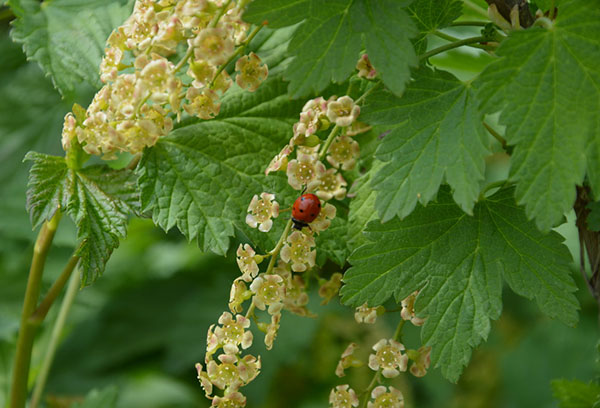
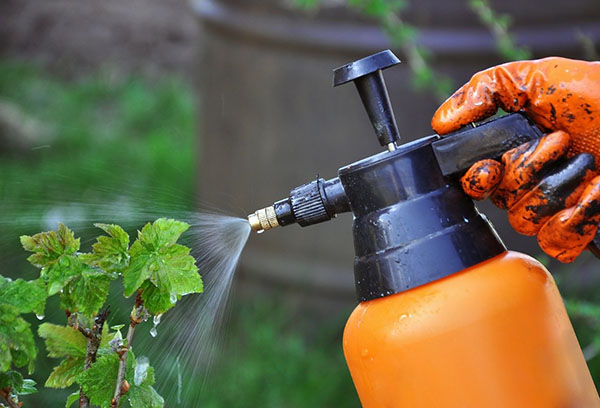
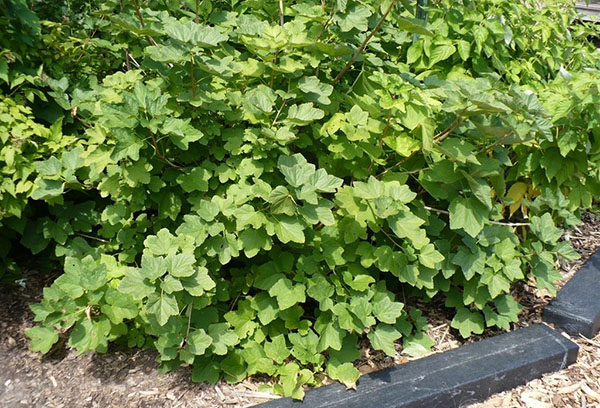
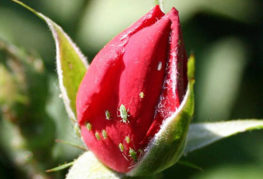

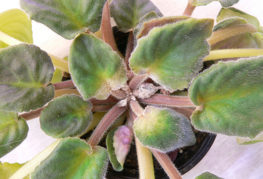
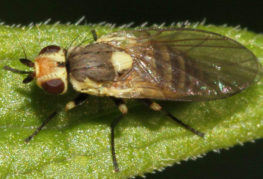
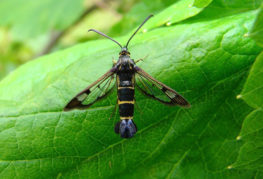
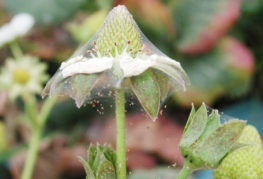
and will be published shortly.